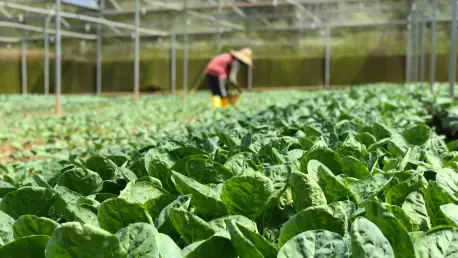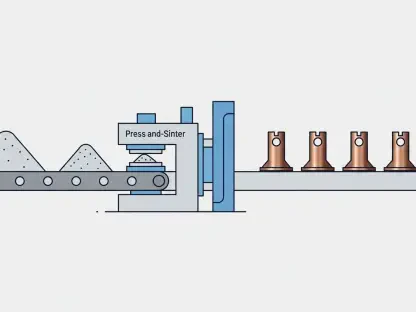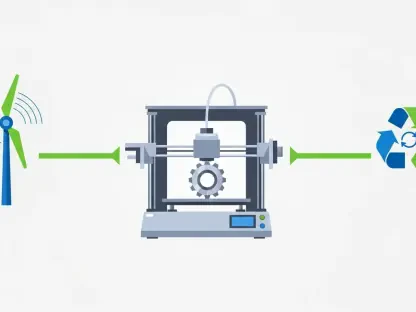What if the everyday choice of what lands on a dinner plate could save millions of lives and shield the planet from climate collapse? A staggering statistic reveals that transforming global food systems could prevent 15 million deaths each year while slashing greenhouse gas emissions. This isn’t just about eating healthier—it’s about averting a dual crisis of human health and environmental ruin. The connection between a simple meal and global survival is closer than most realize, and the urgency to act has never been clearer. Dive into a compelling exploration of how food holds the key to a sustainable future for all.
Why a Plate Can Save Millions
The power of food choices extends far beyond personal health, touching on life-and-death matters for millions. A groundbreaking report by a team of international scientists highlights that the current global diet, heavy on red meat and processed foods, fuels chronic diseases like heart conditions and diabetes, contributing to an estimated 15 million preventable deaths annually. In high-income countries, overconsumption of animal products is particularly rampant, creating a ripple effect that strains both bodies and the environment. This isn’t a distant problem—it’s a crisis unfolding with every bite.
Beyond individual impact, food systems are a linchpin in the fight against climate change. Agricultural practices tied to meat production, especially beef and lamb, release massive amounts of planet-warming gases, often outpacing emissions from other major sectors. The report suggests that a shift in eating habits, particularly in wealthier nations, could cut agricultural emissions by 15-20% when paired with smarter farming and less waste. This dual benefit of saving lives and the planet makes dietary change a non-negotiable priority.
The stakes are highest for vulnerable communities who bear the brunt of food insecurity and environmental fallout. Nearly half the world’s population struggles with access to nutritious meals or safe working conditions in agriculture, with marginalized groups like ethnic minorities and those in conflict zones hit hardest. Addressing this crisis through food system reform isn’t just about survival—it’s about equity and justice on a global scale.
The Broken Food System: A Crisis Unfolding
Current food production and consumption patterns are driving humanity toward catastrophe. The system isn’t merely flawed—it’s a major contributor to intersecting global challenges, from skyrocketing rates of diet-related illnesses to accelerating biodiversity loss. Industrial farming practices, especially those tied to livestock, degrade land and pollute water, pushing planetary boundaries to their limits. This unsustainable model threatens not just future generations but communities suffering right now.
Climate change is deeply intertwined with how food is grown and distributed. Agriculture accounts for a significant share of greenhouse gas emissions, with some metrics placing it ahead of energy production as a polluter. Deforestation for cattle ranching and methane from livestock are key culprits, exacerbating global warming at an alarming rate. Without urgent intervention, the environmental toll will only worsen, amplifying extreme weather events that disrupt food supplies further.
Social inequities compound the crisis, as access to healthy food remains a privilege rather than a right for many. In low-income regions, malnutrition and hunger persist alongside exploitative labor practices in farming. The system fails to prioritize fairness, leaving millions exposed to both health risks and economic hardship. Recognizing these layered challenges is essential to understanding why a complete overhaul is the only path forward.
A Blueprint for Change: The Planetary Health Diet
A revolutionary framework, dubbed the Planetary Health Diet, offers hope amid the chaos of failing food systems. This science-backed plan calls for a dramatic pivot to plant-based foods—grains, vegetables, fruits, nuts, and legumes—while slashing animal product intake, particularly red meat, to roughly one serving per week in wealthier nations. Such a shift could save 15 million lives yearly by curbing diet-linked diseases, a figure that underscores the diet’s transformative potential for global health.
Environmentally, the benefits are equally striking. Reducing reliance on intensive livestock farming could lower agricultural emissions significantly, with potential savings equivalent to an entire nation’s yearly output, such as Russia’s. This diet also tackles other pressing issues like water pollution and habitat destruction, as plant-based systems demand fewer resources than meat-heavy ones. It’s a holistic strategy that aligns human well-being with ecological balance.
Implementation isn’t without hurdles, yet the framework accounts for cultural and economic diversity. While high-income countries must lead by cutting excess consumption, the plan emphasizes tailored approaches for different regions, ensuring nutritional needs are met without erasing dietary traditions. This balance between ambition and practicality makes the Planetary Health Diet a viable tool for systemic change, provided there’s collective will to adopt it.
Expert Insights: The Urgent Call to Rethink Food
Leading voices in science and policy amplify the critical need for food system reform. Johan Rockström, a prominent figure at the Potsdam Institute for Climate Impact Research, warns that clinging to current practices spells disaster across health, environmental, and social fronts. He stresses that even modest reductions in meat consumption can yield significant benefits, framing food as a personal yet powerful lever for change.
Other experts echo this urgency with complementary perspectives. Kathleen Merrigan of Arizona State University praises the comprehensive nature of recent scientific findings, noting how they connect farming methods, consumer habits, and labor rights into a unified narrative. Meanwhile, Emily Cassidy from Project Drawdown points to the sheer scale of impact, highlighting that dietary shifts in key regions could match massive national emission cuts. These insights ground the issue in both data and real-world possibility.
The consensus among thought leaders is clear: action must span individual and institutional levels. From personal choices to national policies, the path forward requires collaboration to overcome entrenched habits and systemic barriers. Their collective expertise paints a picture of crisis but also of opportunity, urging a unified push to transform how food is produced and consumed before it’s too late.
Practical Steps to Transform Food Systems Today
Change begins with actionable measures that anyone can adopt while pushing for broader reforms. On a personal level, cutting red meat to one serving weekly and embracing plant-based options like lentil dishes or veggie stir-fries can make a measurable difference. Small shifts, such as participating in meatless days, add up when multiplied across communities, reducing both health risks and environmental strain.
At the community and policy level, advocacy plays a vital role. Supporting local initiatives that promote sustainable agriculture or combat food waste amplifies individual efforts. Governments must step in by embedding food system goals into climate strategies, especially at global forums like upcoming United Nations talks, as experts have urged. Prioritizing access to nutritious options for underserved populations is equally critical to ensure no one is left behind in this transition.
Scaling up, systemic innovation in farming practices offers another avenue for impact. Investments in crop productivity and technologies that minimize waste can complement dietary changes, driving down emissions further. Between 2025 and 2027, integrating these reforms into national agendas could set a precedent for lasting progress. Every level of action, from kitchen to capitol, contributes to a healthier, more resilient food future.
Reflecting on a Path Forward
Looking back, the journey to address the intertwined crises of food, health, and climate revealed a profound truth: solutions were always within reach, waiting for collective resolve to bring them to life. The evidence stood firm—shifting to a Planetary Health Diet and reforming agricultural practices had the power to save millions of lives and curb catastrophic emissions. Experts and communities alike recognized the urgency, laying bare the consequences of inaction through stark data and lived experiences.
What emerged as the next step was a multifaceted approach to implementation. Policymakers needed to champion food equity and sustainability in global agreements, ensuring that vulnerable groups gained access to the benefits of reform. Individuals held a role too, encouraged to experiment with plant-based eating as a tangible contribution. The momentum built from these combined efforts pointed toward a reimagined food landscape, one where health and environment thrived together.
Beyond immediate actions, a longer-term vision took shape, focusing on innovation and education. Research into sustainable farming needed sustained funding, while public campaigns could reshape cultural attitudes toward food over time. This evolving strategy promised not just to mend a broken system but to forge a legacy of resilience, proving that even the simplest choices—like what to eat for dinner—carried the weight of a better world.









